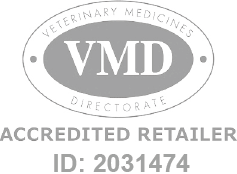Cushing’s Disease In Dogs and Treatment

Cushing’s Disease in Dogs and Treatment
If you’re a dog owner, you’ve probably heard of Cushing’s disease, also known as hyperadrenocorticism. This condition can affect dogs of any age but is most commonly diagnosed in middle-aged to older dogs. Understanding Cushing’s disease in dogs can help you spot the symptoms early and seek timely treatment.
What is Cushing’s disease in dogs?
Cushing’s disease occurs when your dog’s body produces excess cortisol, a crucial hormone in metabolism and stress response. There are two types of Cushing’s in dogs: pituitary-dependent and adrenal-dependent.
- In pituitary-dependent Cushing’s, a tumour on the pituitary gland causes it to release more adrenocorticotropic hormone (ACTH), leading to increased cortisol production.
- In adrenal-dependent Cushing’s, a tumour on the adrenal glands produces excess cortisol.

Symptoms of Cushing’s in dogs
Recognising the signs of Cushing’s syndrome in dogs is crucial for early intervention. Common symptoms can include:
- Increased thirst and urination: If your dog seems to be drinking more water and making more trips outside, it could be a sign.
- Increased appetite: Dogs with Cushing’s may suddenly develop a voracious appetite.
- Weight gain and pot-bellied appearance: A bloated stomach can be a telltale sign of the disease.
- Thinning skin and hair loss: You might notice changes in your dog’s coat, including bald patches or fragile skin.
- Lethargy: If your once-active dog is now spending more time lounging around, it could be time for a vet visit.
Diagnosis
If you suspect your dog has Cushing’s disease, your vet will start with a thorough physical examination and medical history. Blood and urine tests, such as the ACTH stimulation test or the low-dose dexamethasone suppression test, are often used to confirm the diagnosis. Imaging studies like ultrasound may also be necessary to check for tumours.
Treatment options
The good news is that Cushing’s disease in dogs is manageable. Treatment options vary depending on the type of Cushing’s your dog has.
- Medications: The most common treatment for Cushing’s in dogs is medication to reduce cortisol production. Trilostane and mitotane are commonly prescribed and can effectively manage symptoms.
- Surgery: If an adrenal tumour is causing the problem and is operable, surgical removal may be an option. This can provide a more permanent solution, but it’s unsuitable for all dogs.
- Regular monitoring: Whenever you choose a treatment path, regular vet visits and monitoring are essential to ensure your dog’s health remains stable.
Cushing’s disease in dogs might sound scary, but with early diagnosis and proper treatment, many dogs can continue to lead happy, healthy lives. If you notice any signs of Cushing syndrome in your furry friend, don’t hesitate to contact your veterinarian. Early intervention can make all the difference.









